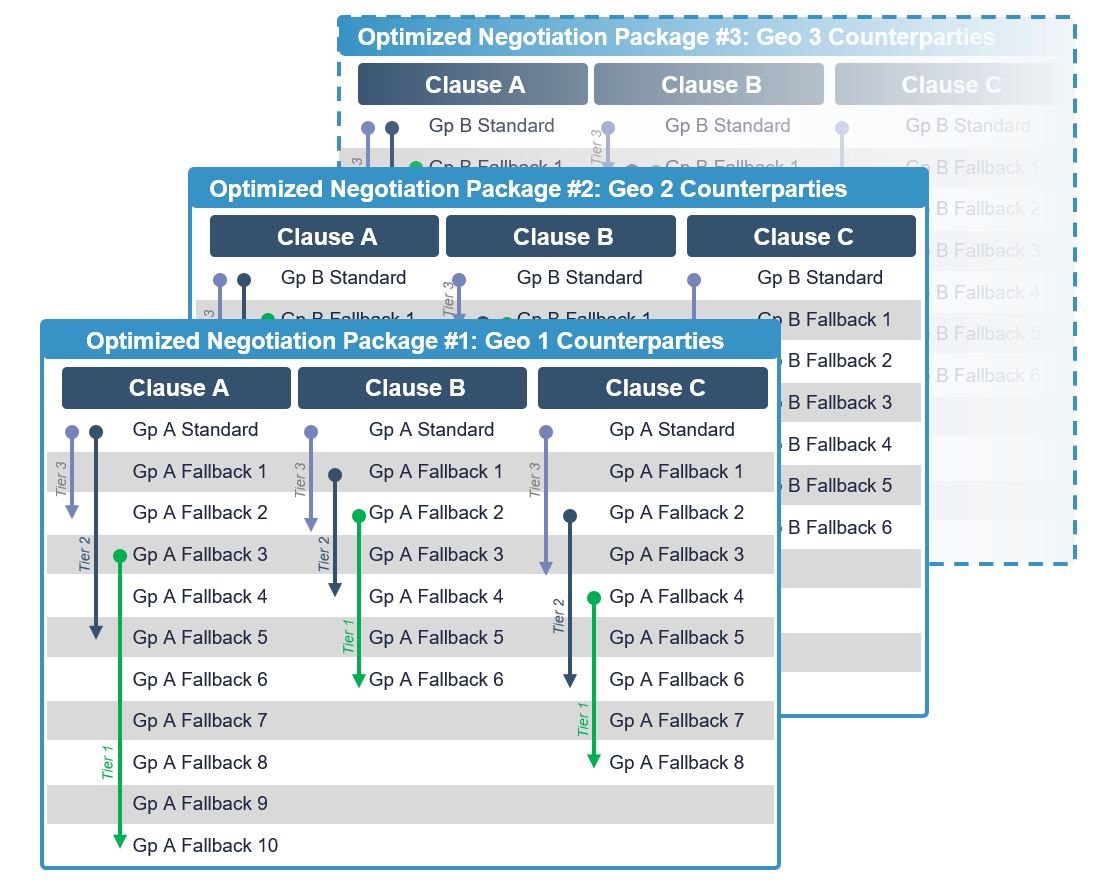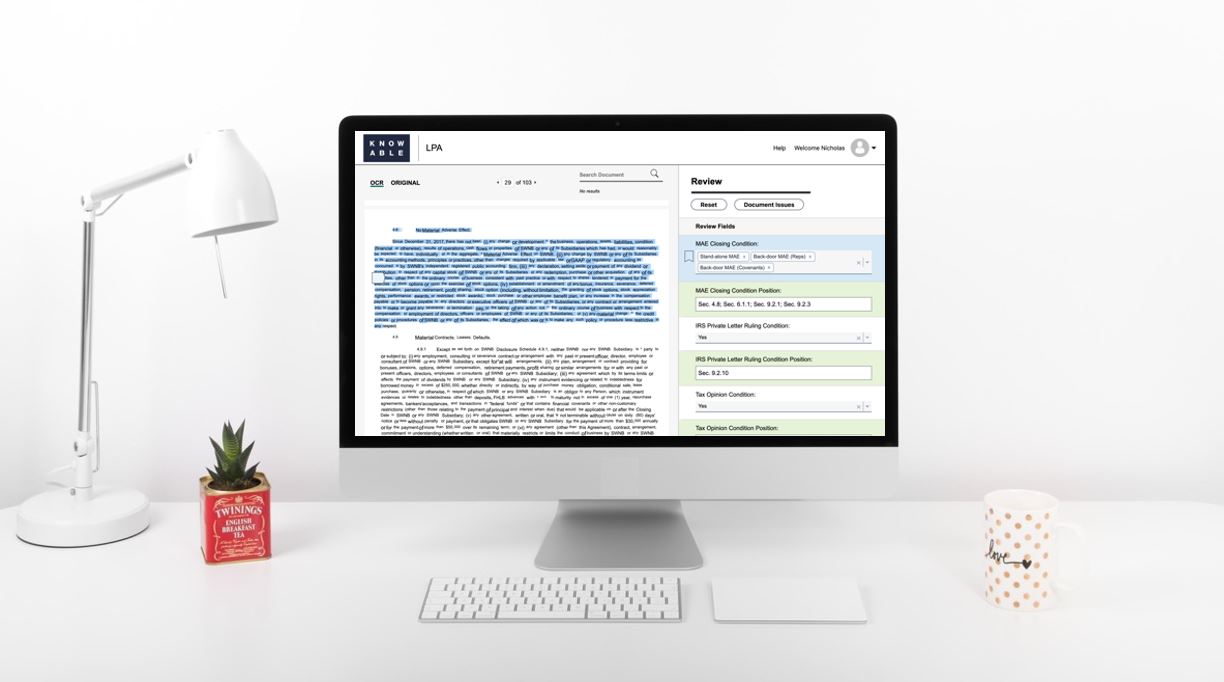This blog post is the third in a series of articles setting out what Contract Data Management (CDM) is and how it differs from, but also complements traditional Contract Lifecycle Management (CLM) in powerful ways.
Today’s post looks at how CDM plays can significantly augment and de-risk CLM deployments to help deliver vastly superior outcomes. This builds upon the robust foundation for CLM deployments that CDM can also help deliver by addressing some of the most common CLM implementation challenges ahead of new CLM deployments.
Later posts in this series will explore how CDM can help enterprises adopt the “right tool for each job.” That is, the combination of contracts capabilities, whether CLM or ‘point solutions’, best suited to each business’ specific needs –even where those needs diverge across the organization and are best served by having different toolsets for different tasks.
Augmenting CLM: From faster workflow management to… smarter
So far, we’ve looked at how CDM can lay a stronger foundation upon which a successful CLM deployment can be launched. Ultimately, though, to be worth the investment, CDM also needs to help enable better results against CLM’s core mission: to deliver better negotiation outcomes.
First, let’s define what “better negotiation outcomes” really means: (1) better substantive results, (2) achieved faster, and (3) at lower cost. Depending on a CLM solution’s primary orientation (that is, where it falls on the “Enablement vs. Controllership” spectrum, most CLMs will focus primarily on (2) and (3).
 For instance, workflow automation or the automated handling of counterparty markups will enable negotiators to conduct more negotiations, faster. Effective escalations-handling or the ability to more effectively enable negotiators to navigate deep playbooks and complex guidance will allow for more negotiations to be conducted by less experienced personnel, parts of the organization other than the legal team (such as Sales or Procurement), or even 3rd party providers (such as ALSPs or LPOs) –all of which can materially reduce cost.
For instance, workflow automation or the automated handling of counterparty markups will enable negotiators to conduct more negotiations, faster. Effective escalations-handling or the ability to more effectively enable negotiators to navigate deep playbooks and complex guidance will allow for more negotiations to be conducted by less experienced personnel, parts of the organization other than the legal team (such as Sales or Procurement), or even 3rd party providers (such as ALSPs or LPOs) –all of which can materially reduce cost.
But better substantive negotiation outcomes –whether that means improved commercial terms or lower legal, compliance and operational risk—is best achieved by enabling negotiators to make better decisions. And better decisions come from having access to better information –specifically, about what has been agreed to in the past. Which is precisely what CDM is designed to do.
For instance, one can drastically reduce the risk of unwanted deviations by surfacing to the negotiator quantified information about what has previously been agreed with the counterparty in question, what positions comparable counterparties have typically obtained, whether any recent trends are indicating a shift in relevant market standards, and how all this compares with the client’s policy.
In other words, with access to structured data about the company’s historical negotiations, it becomes possible to surface information within the negotiation process itself to unlock demonstrably more favorable substantive outcomes.
What’s more, this kind of contextual information about historical negotiations can also significantly improve cycle times. By tracking workflow information about how much time each negotiation takes in tandem with data about the substantive positions adopted at the outset, during, and at the conclusion of the negotiation process, it becomes possible to define optimal negotiation ‘pathways’ that yield the shortest possible cycle time for any given substantive outcome (typically by reducing the amount of ‘round-tripping’ between counterparties and minimizing the number of approvals required).
So unlike tools that focus on the negotiation workflow alone, CDM can indeed have massive impact not just on the quality of substantive outcomes, but also negotiation efficiency –especially when paired up with CLM capabilities effective in facilitating execution on these better negotiation ‘pathways’ defined via CDM.
Mitigating the risk of end-user rejection
It is an unfortunate fact that many CLM deployments fail to meet initial expectations and, not infrequently, end up being abandoned altogether (18% of CLM users claim success –Ultria).
This isn’t because there is anything inherently wrong with CLM solutions. Most are, in fact, very good at what they do. But beyond the challenges discussed in other posts (e.g., from not calibrating internal processes adequately to accommodate the introduction of new workflow tools, or not managing ongoing policy governance effectively), 2 other important drivers of user dissatisfaction with CLMs can be materially mitigated via effective use of CDM:
- Negotiator frustration. Since most of the day-to-day users of CLM tools are also those responsible for creating and negotiating new contracts, it is critical that this constituency embrace the solution. After all, if the tool isn’t being used, it can’t possibly deliver the intended benefits. And by and large, most CLMs have empirically acknowledged this, with every new version introducing ever more attractive UX, increasingly intuitive and flexible workflow automation, seamless integration with e-signature, etc.

But whereas CLMs have significantly improved users’ pre-execution experience, they have not –and really, they cannot—mitigate the post-execution data capture burden. Clients are effectively afforded 3 options in this regard: (i) capture very little if any structured contract data, (ii) settle for mediocre (at best) accuracy from fully-automated tools, or (iii) require negotiators to capture the data more extensively themselves. Beyond the issues with that last option, imposing such a tedious, repetitive task on experienced attorneys is a surefire way of generating user dissatisfaction, bad data quality, or both. - Downstream user frustration. As discussed, contract information is today an invaluable business asset. A variety of downstream users from across the organization –Sales, Procurement, Operations, Finance—have increasingly come to depend on access to accurate contract data. So if the data generated through the CLM process isn’t sufficiently comprehensive, or isn’t reliable enough, or isn’t made available in a sufficiently accessible fashion, it significantly impairs these stakeholders’ ability to do their jobs.
Unfortunately, that is still the typical state of affairs in most companies today. In businesses where the impetus to make better data available to downstream users has already reached a boiling point, the data capture limitations inherent to CLM tools have meant that, more often than not, additional pressure was placed on negotiators to capture the data themselves… thereby further undermining user satisfaction among that key constituency (the “negotiator frustration problem in #1 above), which in turn tends to yield user rejection, further degradation in data quality, and ultimately a failed implementation.
Effective CDM can meaningfully mitigate both negotiator and downstream user frustration. It liberates negotiators from having to abstract almost any data. It can guarantee levels of data accuracy that systematically meet business users’ requirements. And it can make that data available in downstream systems in a more timely fashion.
In short, by bringing to bear capabilities designed specifically to manage contract data, CDM enables each corporate stakeholders to focus on what they do best: negotiators can drive towards better negotiation outcomes, substantive experts can define more optimized policies, and downstream users can make better, more timely business decisions in reliance on more accurate contract data.
So what’s the best way to combine CDM and CLM?

This blog post has made the case for why high-performing businesses today should deploy CDM competencies alongside CLM to fully unlock the value resident in their contracts, with CDM being a valuable precursor to any CLM deployment as it can vastly enhance the prospects for successful CLM implementation.
But is there such a thing as the ‘right’ CLM solution to pair with CDM capabilities? Is it better to lock in on a single solution that meets ‘common denominator’ requirements across the organization, or look to multiple CLMs or point solutions better suited to specific needs –albeit at the cost of having a more fragmented and complex contracting ecosystem? In other words, to create value for the organization, is it better to adopt the ‘best tool for each job’, or aim to streamline and simplify the toolset introduced in the corporate contracts ecosystem?
The answer to that question will depend on the specific circumstances of each organization. But our next and final blogpost in this series will explain how CDM allows companies to entertain much greater flexibility and optionality in making this decision.